
Understanding and optimizing team performance is a dynamic and complex process that hinges on the ability of leaders to harness individual and collaborative strengths effectively.
Team Effectiveness Models provide a comprehensive framework, guiding leaders on how to nurture high-performing teams that are adept at achieving organizational goals.
These models, underpinned by research from esteemed organizations such as Google, reveal that success is less about the composition of the team and more about fostering collaboration, respect, and mutual motivation among members.
In this article, we will explore seven proven team effectiveness models, each offering unique insights into managing team dynamics, enhancing interpersonal relationships, and driving exceptional team performance.
Here are some of the things you’ll learn from this article:
✅ What makes each model so unique
✅ Which model you should use with your team
What is a Team Effectiveness Model?
A team effectiveness model is a conceptual framework designed to help organizations optimize the performance and productivity of their teams.
These models provide actionable insights into the key factors that drive team success, including:
- communication
- leadership
- role clarity
- and collaboration.
By applying a team effectiveness model, businesses can systematically identify strengths and areas for improvement within their teams, enabling them to implement targeted strategies for enhancing team dynamics and achieving organizational goals.
How do you utilize a Team Effectiveness Model?
To practically utilize a team effectiveness model, organizations should first select a model that aligns with their specific needs and goals.
The next step involves assessing the current state of the team using the criteria defined by the model, such as communication patterns, leadership effectiveness, and member roles. This assessment can be conducted through surveys, interviews, and observation. Based on the findings, leaders can identify gaps and develop targeted interventions to address these areas, such as training programs, team-building activities, or changes in team structure.
Regularly monitoring progress and making iterative adjustments based on feedback ensures the team continues to evolve and improve.
7 proven Team Effectiveness Models
The following models can help to measure and boost team effectiveness in your company.
1. Rubin, Plovnick, and Fry’s GRPI Model of Team Effectiveness
The GRPI model stands for goals, roles, procedures, and interpersonal relationships. As one of the oldest models for team effectiveness, it was first introduced by Richard Beckhard in 1972 to help with understanding team behaviour. It was then made popular in 1978 by doctors Irwin Rubin, Mark Plovnick, and Ronald Fry.
The model consists of four components:
- Goals: Teams must have clear objectives and desired accomplishments in order to be effective. Without evident direction, it can lead to disputes and disagreements.
- Roles: Each and every team member is required to know their responsibilities, authority, and what they’re accountable for. Not knowing this can also lead to conflict.
- Procedures: There have to be set processes in place in order for the team to operate successfully. This includes, but isn’t limited to, decision-making methods, workflow procedures, conflict resolution strategies, and communication best practices.
- Interpersonal relationships: It’s crucial for team members to develop relationships with one another that are based on trust, good communication, and adaptability.
Best suited for: Teams who have lost their direction and need to find their way back into the swing of things.
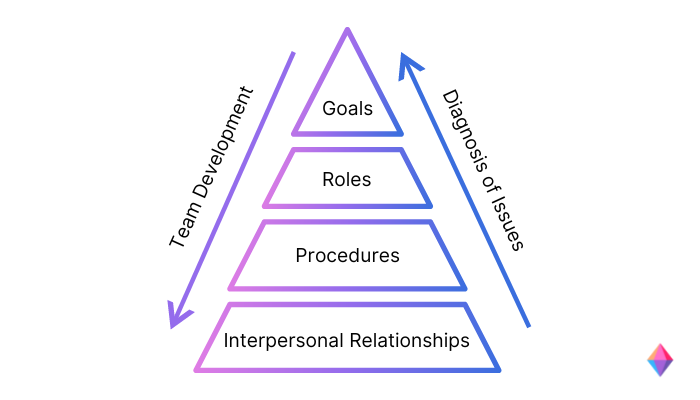
2. Tuckman’s FSNP Model
Bruce Tuckman introduced the Forming-Storming-Norming-Performing (FNSP) model in 1965. It is made up of four sequential stages in group development, from the first time the team meet to the completion of the project. In 1977, along with Mary Ann Jensen, he added a fifth stage, Adjourning.
The stages required to achieve team effectiveness are:
- Forming: Team members first meet each other, and goals and objectives are agreed upon. Because everyone would have just met, it’s not unusual for people to still act independently.
- Storming: People start to open up and trust begins to build. Team members begin to understand each other’s different working styles and figure out how to work as a team. Managing complaints and conflict for the first time also happens in this stage.
- Norming: Team members realize the importance of working towards the team’s success and taking on responsibility. They start to accept and tolerate everyone’s quirks for the sake of the group.
- Performing: By this stage, the team has built trust with each other and is motivated to work together to achieve shared goals.
- Adjourning: Once the project is over, an assessment is performed. Plans are made for changes and individual contributions are acknowledged.
Best suited for: People who want to understand the various stages that make up team development within group projects.
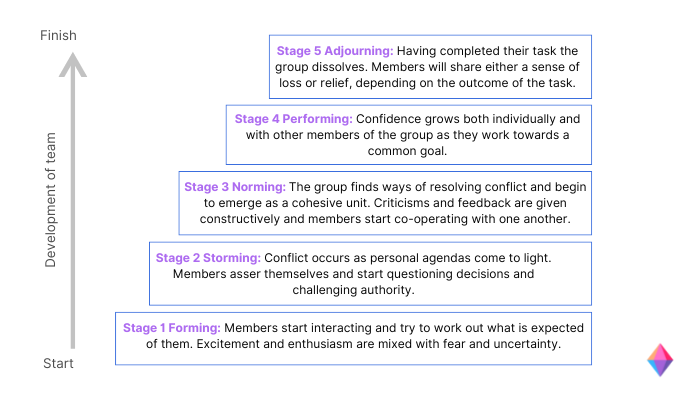
3. The Katzenbach and Smith Model
Jon Katzenbach and Douglas Smith developed this team effectiveness model in 1993 after studying various teams who were experiencing challenges in their work environments.
They define a team as “a small group of people with complementary skills who are committed to a common purpose, performance goals, and approach for which they are mutually accountable.” The model suggests that there are five levels of teamwork:
-
- Working group: Team members are operating as individuals and not together.
- Pseudo-team: Team members think they’re operating as a team, but are in fact, still working as individuals.
- Potential team: Team members are starting to work together.
- Real team: The team has accomplished a shared goal.
- High-performing team: Team members go beyond working together and are dedicated to each other’s development.
Their model showcases effective teams in a triangular diagram with the potential three outcomes (and what teams should strive for) as the three points:
- collective work products
- personal growth
- and performance results.
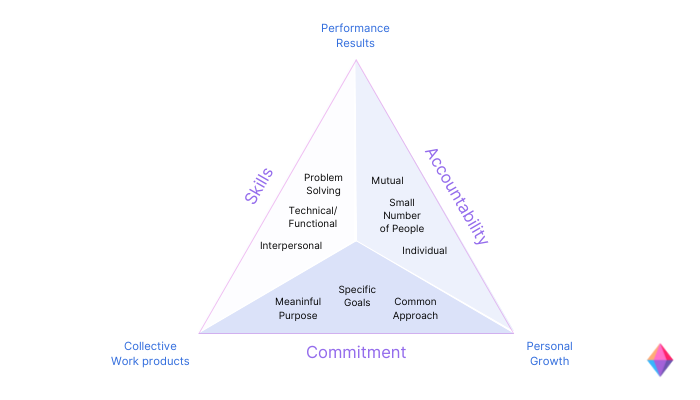
To get there, they must work on the following three-team effectiveness factors, which make up the sides of the triangle:
- Skills: Problem-solving, technical, and interpersonal are a few examples of the skills every team member should possess.
- Accountability: There should be mutual accountability as well as individual accountability when it comes to group projects and tasks.
- Commitment: Dedication to work is more likely when everyone on the team is engaged and focused on group objectives.
Best suited for: Teams with members who are finding it difficult to transition from an individual working mindset to a team working mindset.
4. The LaFasto and Larson Model
In their version of a team effectiveness model, Dr. Frank LaFasto and Carl Larson studied 6,00o team members and leaders across various industries and organizations in 2001 to come up with the elements of an effective team.
Initially called the “Five Dynamics of Team Work and Collaboration”, they narrowed it down to five elements:
- Team member: What kind of skills and characteristics do they possess? Are they the right fit for the role?
- Team relationships: When you select someone with a great attitude, then forming good working relationships won’t be so difficult.
- Team problem solving: When there are good working relationships within the team, it can assist in making group decisions easier and reduce conflict.
- Team leadership: Having a leader that encourages and engages their team is crucial to their success.
- Organization environment: The likelihood of commitment from a team is increased when there are the right methods and company culture in place.
LaFasto and Larson determined that although as individuals we may possess high talent, it’s futile unless we’re able to figure out how we can pool our talents together to work as a team. It’s as a team that we can solve the most significant problems.
Best suited for: People who want to learn about the dynamics of teamwork and collaboration.
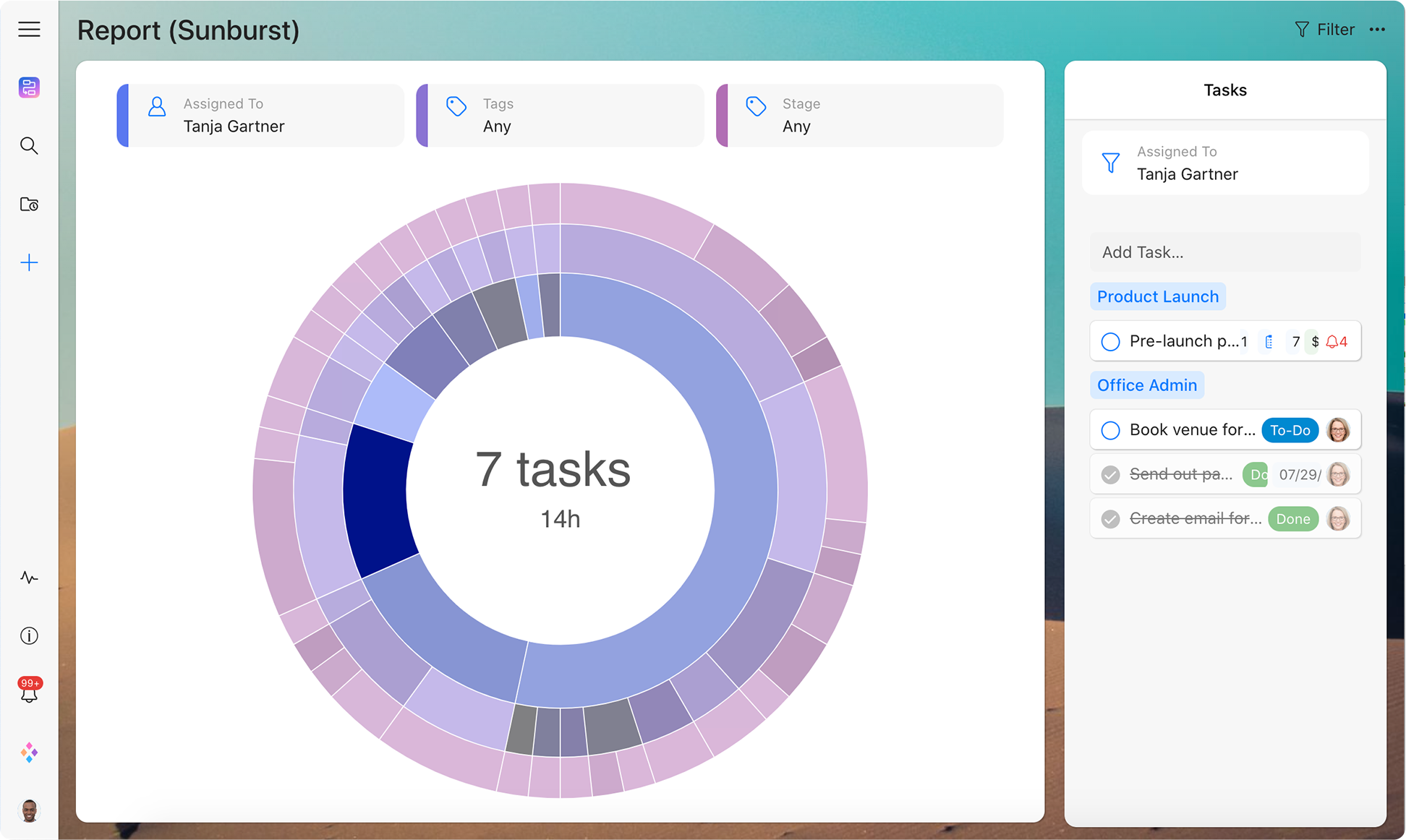
Finally, a project management platform that prioritizes the teams in charge.
Get started for free now.
5. The T7 Model of Team Effectiveness
Michael Lombardo and Robert Eichinger developed the T7 Model in 1995 in hopes of better understanding the factors behind team effectiveness. What they came up with were five internal factors and two external factors—all beginning with the letter “T”, hence the name.
Internal factors:
- Thrust: The team has a shared purpose.
- Trust: Team members have confidence in each other and can rely on each other.
- Talent: Skills to make things happen.
- Teaming skills: The ability to work as a team.
- Task skills: The successful execution of tasks.
External factors:
- Team leader fit: How well the leader works with the team.
- Team support from the organization: How well the organization works with the team which includes resource support and the authority to do things.
All seven factors are imperative in ensuring high team performance and effectiveness. The effort of the internal factors would be wasted if the external factors didn’t come into play.
Best suited for: Teams and/or people who want to understand the elements that impact team effectiveness, and how they operate with one another.
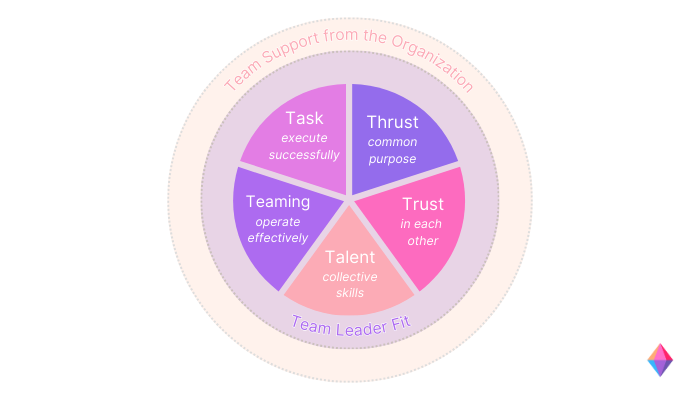
6. The Hackman Model
Richard Hackman put forth a new model in his 2002 book, “Leading Teams: Setting the Stage for Great Performances”. This model proposed that if you had certain conditions, the probability of team effectiveness is pretty high.
As one of the world’s leading experts on group and organizational behaviour, he believed that teams were at their best when certain conditions were created by leaders to allow them to manage themselves effectively. He believed that it was the leader’s responsibility to ensure the teams were self-sustainable.
Five essential conditions that make up a successful team:
- Team stability
- Clear and engaging direction
- Enabling structure
- Supportive organizational context
- Expert coaching
Best suited for: Leaders looking for insight on how to best structure and guide their teams so they can be self-sustaining.
7. The Lencioni Model
Patrick Lencioni’s book, “The Five Dysfunctions of a Team”, presents a team effectiveness model that is slightly different to the others. Instead of focusing on the elements your team should have, this one focuses on the things it shouldn’t have.
This model suggests that knowing the dysfunctions of your team can help you establish an effective team as you know what to expect and how to manage it effectively.
The five dysfunctions are:
- Absence of trust: If team members can’t be vulnerable to one another, it may prevent the trust from being built within the team.
- Fear of conflict: Pretending to get along for the sake of artificial harmony can stop a potential conflict that can actually result in productive ideas.
- Lack of commitment: If team members aren’t dedicated then it will hinder their decision making and meeting deadlines.
- Avoidance of accountability: People need to get over any discomfort and hold each other accountable.
- Inattention to results: If team members prioritize personal goals over common success, then details on how to improve will be overlooked.
Best suited for: People who want to acquire knowledge of factors that could potentially cause a team’s demise, but also know how to manage them should they ever face them.
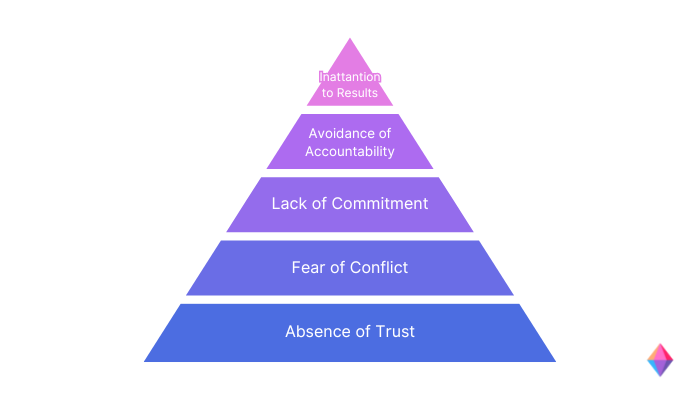
Final Thoughts
When individuals work together, it can produce better output for the business. Everyone on the team needs to be able to communicate, cooperate, and collaborate in order to innovate and get the best possible results.
Team effectiveness is essential to attain growth and accomplish goals, and the best way to achieve this is to understand the individuals within your team and how to best work with them. The aforementioned models do their best to map this so that teams and leaders are on the right path toward success.
Which team effectiveness model best suits your team? As always we’d love to hear from you.
The Zenkit Team
FREE 20 MIN. CONSULTATION WITH A PROJECT MANAGEMENT EXPERT
Wanna see how to simplify your workflow with Zenkit in less than a day?
Book a Live Demo

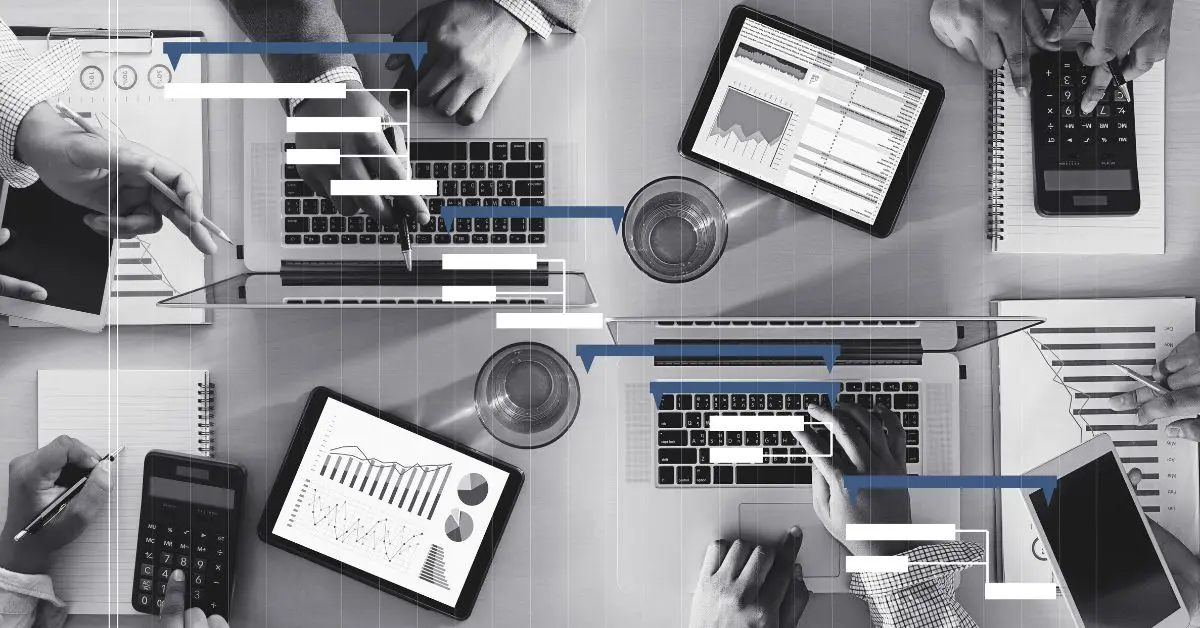
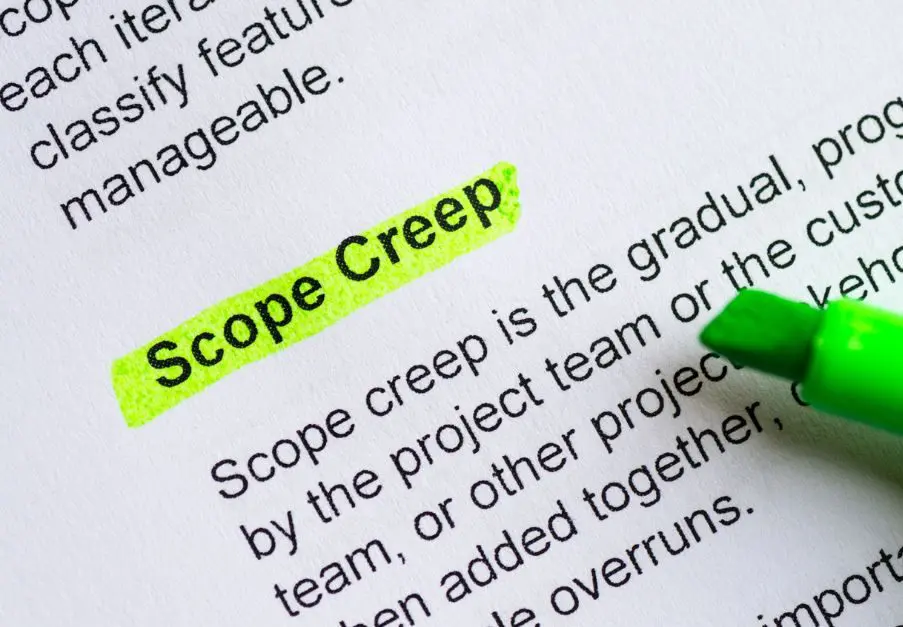

Leave a Reply